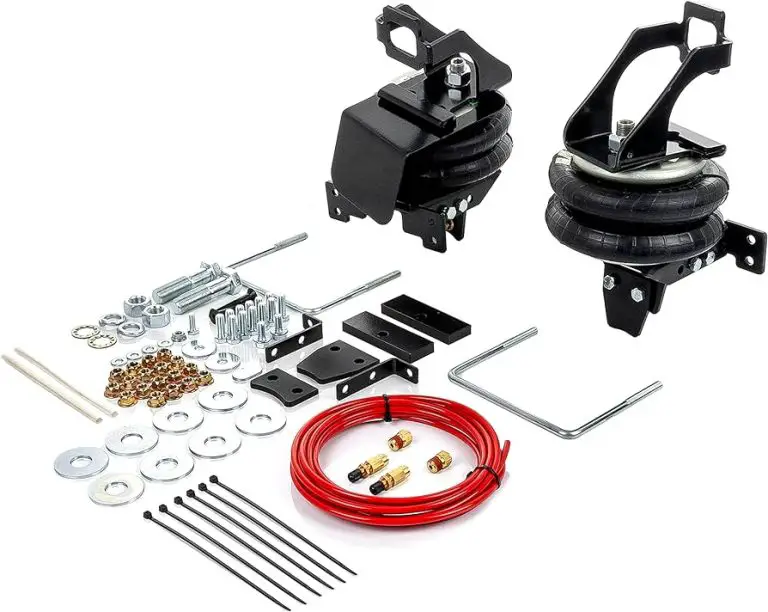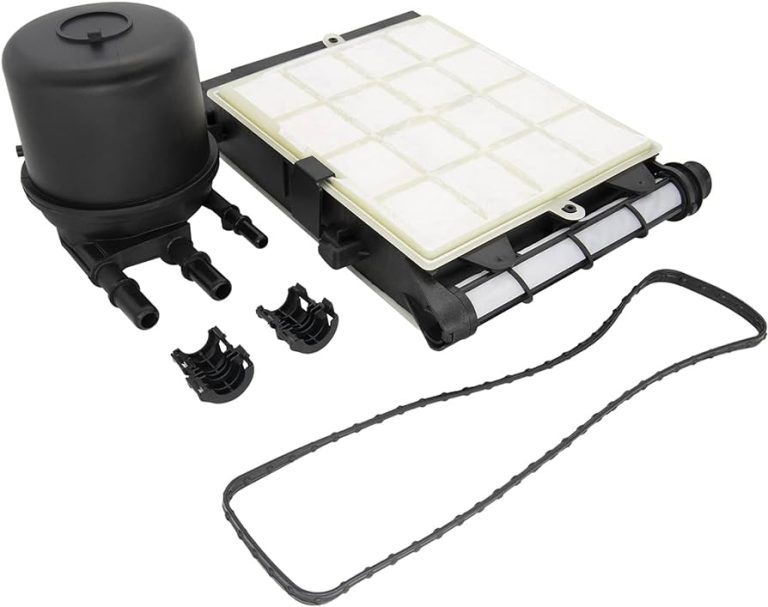Symptoms of a Faulty 5.3 Oil Pickup Tube O-Ring (Easily Detect)
In the intricate workings of a 5.3 engine, even the smallest components can have a significant impact on its performance and reliability. The oil pickup tube O-ring is one such crucial component that often goes unnoticed until problems arise.
The oil pickup tube O-ring plays a vital role in maintaining proper oil flow and preventing leaks between the oil pickup tube and the engine block. When this O-ring begins to fail, it can lead to a range of issues that can affect the engine’s performance and potentially cause severe damage if left unaddressed.
In this article, we will explore the symptoms that indicate a faulty 5.3 oil pickup tube O-ring. By being aware of these signs, you can take timely action to resolve the problem and safeguard the health of your engine. We will also discuss the diagnostic process, repair options, and preventive maintenance tips to help you keep your engine running smoothly.
Whether you are a seasoned car enthusiast or a vehicle owner looking to understand potential engine issues, this article will provide valuable insights into recognizing and addressing the symptoms of a faulty 5.3 oil pickup tube O-ring. So let’s dive in and discover the telltale signs that indicate a problem with this critical engine component.
What is the Oil Pickup Tube O-Ring?
The oil pickup tube O-ring is a small but crucial component in an engine’s lubrication system. It is located at the junction where the oil pickup tube connects to the engine block or oil pump. The primary function of the oil pickup tube is to draw oil from the oil pan and deliver it to the engine’s internal components for lubrication.
The O-ring, typically made of rubber or silicone material, serves as a seal between the oil pickup tube and the engine block. It prevents oil leaks and ensures that the oil is properly transferred without any loss of pressure or contamination. The O-ring creates a tight seal that keeps the oil flowing smoothly through the engine, contributing to its optimal performance and longevity.
Due to its location and constant exposure to heat, oil, and engine vibrations, the oil pickup tube O-ring may deteriorate over time. When the O-ring becomes worn, damaged, or brittle, it can compromise the seal, leading to oil leaks, decreased oil pressure, and potential engine problems.
Regular inspection and maintenance of the oil pickup tube O-ring are essential to prevent leaks and maintain the proper function of the engine’s lubrication system. If any issues are detected with the O-ring, it is crucial to address them promptly by replacing the faulty O-ring to ensure the integrity of the engine’s oil circulation.
Common Symptoms of a Faulty Oil Pickup Tube O-Ring
A faulty oil pickup tube O-ring in an engine can exhibit various symptoms that indicate a potential problem with the sealing and lubrication system. Recognizing these symptoms can help you address the issue promptly and prevent further damage to your engine. Here are some common symptoms of a faulty oil pickup tube O-ring:
1. Oil Leaks
One of the primary signs of a faulty O-ring is oil leakage around the oil pickup tube area. You may notice oil pooling or dripping beneath the engine or detect oil stains on the engine block or oil pan.
2. Low Oil Pressure
A deteriorated O-ring can lead to decreased oil pressure in the engine. Insufficient oil pressure can cause engine components to experience inadequate lubrication, resulting in increased friction, heat, and potential damage.
3. Engine Noise
When the oil pickup tube O-ring fails, it can disrupt the proper flow of oil to the engine’s components. This can result in increased engine noise, such as ticking or knocking sounds, as the moving parts may not receive sufficient lubrication.
4. Oil Contamination
A faulty O-ring can allow contaminants, such as dirt, debris, or engine sludge, to enter the engine’s lubrication system. This can lead to oil contamination, affecting its quality and lubricating properties. Contaminated oil may not effectively protect the engine, potentially causing increased wear and damage.
5. Oil Warning Light
If the oil pickup tube O-ring issue leads to low oil pressure, it can trigger the oil pressure warning light on the instrument cluster. This warning light indicates a potential problem with the lubrication system and should not be ignored.
Diagnostic Process
When experiencing symptoms that suggest a faulty oil pickup tube O-ring, it is important to perform a diagnostic process to confirm the issue and identify the exact cause of the problem. Here are the steps involved in diagnosing a faulty oil pickup tube O-ring:
1. Visual Inspection
Begin by visually inspecting the engine’s oil pickup tube area. Look for any visible signs of oil leakage, such as oil pooling or dripping beneath the engine or oil stains on the engine block or oil pan. Examine the condition of the O-ring for signs of wear, damage, or deterioration.
2. Oil Pressure Testing
Use an oil pressure gauge to measure the engine’s oil pressure. Compare the measured pressure with the manufacturer’s recommended specifications for your specific engine model. Low oil pressure may indicate a problem with the oil pickup tube O-ring or other components of the lubrication system.
3. Oil Analysis
Consider conducting an oil analysis to assess the quality and condition of the engine oil. Oil analysis can detect the presence of contaminants, such as dirt, debris, or metal particles, which could indicate a problem with the oil pickup tube O-ring or other internal engine components.
4. Leak Detection Dye
If the visual inspection did not reveal any obvious oil leaks, you can add a leak detection dye to the engine oil. Run the engine for a short period and then use a UV light to inspect for any fluorescence, indicating the presence of oil leaks originating from the oil pickup tube area.
5. Professional Inspection
If you are uncertain about the diagnosis or unable to perform the necessary tests yourself, it is advisable to seek the assistance of a qualified mechanic or technician. They have the expertise and diagnostic tools to accurately diagnose the issue and confirm whether the oil pickup tube O-ring is indeed faulty.
Repair and Replacement
If the diagnostic process confirms that the oil pickup tube O-ring is faulty and causing the symptoms, it is essential to proceed with repair and replacement. Here are the steps involved in repairing and replacing the oil pickup tube O-ring:
1. Prepare the Vehicle
Ensure that the vehicle is parked on a flat surface and the engine has cooled down completely to avoid any potential burns. Put on safety goggles and gloves to protect yourself during the repair process.
2. Drain the Engine Oil
Before working on the oil pickup tube, it is necessary to drain the engine oil. Locate the oil drain plug on the oil pan and place a drain pan underneath. Remove the plug and allow the oil to drain completely.
3. Remove the Oil Pan
In most cases, gaining access to the oil pickup tube and O-ring requires removing the oil pan. Consult the vehicle’s service manual for specific instructions on how to remove the oil pan, as the process may vary depending on the make and model.
4. Inspect the Oil Pickup Tube
Once the oil pan is removed, inspect the oil pickup tube for any signs of damage or wear. Check for cracks, bends, or clogs that may affect its functionality. If the tube shows any signs of damage, it is recommended to replace it along with the O-ring.
5. Replace the O-Ring
Carefully remove the old O-ring from the oil pickup tube and clean the area where the new O-ring will be installed. Apply a small amount of clean engine oil to lubricate the new O-ring before installing it. Place the new O-ring onto the oil pickup tube and ensure it sits securely in place.
6. Reinstall the Oil Pan
Once the new O-ring is in place, reinstall the oil pan following the manufacturer’s instructions. Ensure that all bolts are tightened to the specified torque.
7. Refill the Engine with Oil
Fill the engine with the recommended amount and type of oil as specified in the vehicle’s manual. Be careful not to overfill.
8. Start the Engine and Check for Leaks
Start the engine and let it run for a few minutes. Monitor the area around the oil pickup tube and oil pan for any signs of leaks. If no leaks are detected, turn off the engine and allow it to cool.
9. Check Oil Level
Once the engine has cooled down, check the oil level using the dipstick. Adjust the oil level if necessary by adding or draining oil.
10. Dispose of Used Oil
Properly dispose of the used oil and oil filter according to local regulations or take them to a recycling center.
Preventive Maintenance Tips
To prolong the life of the oil pickup tube O-ring and prevent future issues, it is essential to follow preventive maintenance practices. Here are some tips to help you maintain the oil pickup tube O-ring:
1. Regular Inspections
Perform visual inspections of the oil pickup tube and surrounding area during routine maintenance. Look for any signs of oil leaks, damage, or wear on the O-ring. Address any issues promptly to prevent further damage.
2. Oil Changes
Follow the manufacturer’s recommended oil change intervals and use high-quality engine oil. Regular oil changes help maintain proper lubrication and reduce the risk of oil contamination or sludge buildup that could affect the O-ring.
3. Use the Correct O-Ring
When replacing the oil pickup tube O-ring, ensure that you use the correct size and type recommended by the vehicle manufacturer. Using the wrong O-ring can compromise the seal and lead to leaks or improper fit.
4. Avoid Excessive Engine Heat
Excessive heat can accelerate the degradation of the O-ring. Avoid prolonged idling, towing heavy loads for extended periods, or operating the engine under extreme conditions when possible. Ensure that the cooling system is in good working order to regulate engine temperature.
5. Inspect and Maintain Oil Pan Gasket
The oil pan gasket works in conjunction with the oil pickup tube O-ring to prevent oil leaks. Regularly inspect the oil pan gasket and replace it if signs of damage or wear are present.
6. Avoid Harsh Driving Conditions
Driving on rough roads or off-road conditions can put additional stress on the engine and its components. Minimize exposure to harsh driving conditions as much as possible to reduce the risk of damage to the oil pickup tube and O-ring.
7. Monitor Engine Performance
Pay attention to any changes in engine performance, such as unusual noises, decreased oil pressure, or changes in oil consumption. These could be early signs of an oil pickup tube O-ring problem, and addressing them promptly can prevent further damage.
FAQ:
Q: What are the symptoms of a faulty 5.3 oil pickup tube O-ring?
A: When the oil pickup tube O-ring in a 5.3 engine becomes faulty, several symptoms may indicate a problem. These symptoms include oil leaks, low oil pressure, engine noise, oil contamination, and oil warning lights.
Q: How can I identify an oil leak caused by a faulty oil pickup tube O-ring?
A: An oil leak from the oil pickup tube area is a common symptom of a faulty O-ring. You may notice oil pooling or dripping beneath the engine or observe oil stains on the engine block or oil pan.
Q: What is the significance of low oil pressure as a symptom?
A: A faulty oil pickup tube O-ring can cause a decrease in oil pressure. Low oil pressure can lead to inadequate lubrication, resulting in increased friction, heat, and potential engine damage. It is important to address this symptom promptly.
Q: How does a faulty oil pickup tube O-ring contribute to engine noise?
A: When the O-ring fails, it can disrupt the proper flow of oil to the engine’s components. This can result in increased engine noise, such as ticking or knocking sounds, as the moving parts may not receive sufficient lubrication.
Q: Can a faulty oil pickup tube O-ring cause oil contamination?
A: Yes, a faulty O-ring can compromise the seal, allowing contaminants such as dirt, debris, or engine sludge to enter the engine’s lubrication system. This can lead to oil contamination, affecting its quality and lubricating properties.
Q: Will a faulty oil pickup tube O-ring trigger an oil warning light?
A: Yes, if the oil pickup tube O-ring issue leads to low oil pressure, it can trigger the oil pressure warning light on the instrument cluster. This warning light indicates a potential problem with the lubrication system and should not be ignored.
Q: Can I drive my vehicle with a faulty oil pickup tube O-ring?
A: It is not recommended to drive with a faulty oil pickup tube O-ring as it can lead to inadequate lubrication, potential engine damage, and other issues. It is advisable to have the O-ring inspected and repaired or replaced as soon as possible.
Q: Can I replace the oil pickup tube O-ring myself?
A: If you have the necessary mechanical skills and knowledge, you may be able to replace the oil pickup tube O-ring yourself. However, it is important to follow proper procedures and use the correct replacement part. If you are unsure, it is best to consult a qualified mechanic for the repair.





